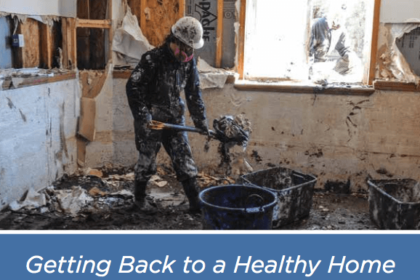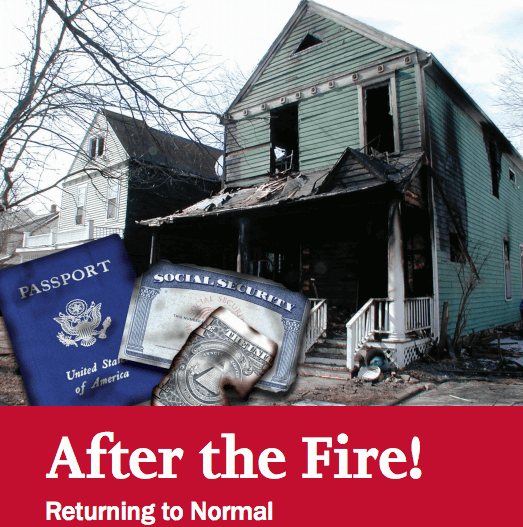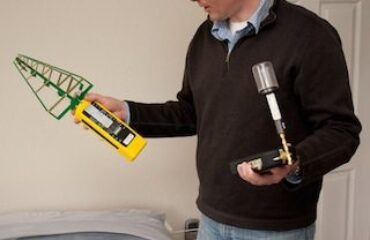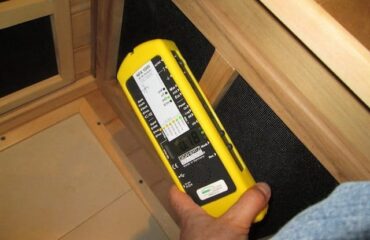Cleaning After Fire

Cleaning After Fire
The October 2017 California Fires in Northern California were devastating. Northern California will be dealing with the death and destruction of recent wildfires for years. The immediate life safety concerns about fire are obvious and frightening, but what many don’t realize is that returning to fire damaged buildings is also hazardous. Cleaning after fire is part of recovery, but done improperly this activity may do more harm. If you’re returning to a fire damaged community follow these fire restoration tips to reduce your health risks.
After you have dealt with the initial raw emotions of fire loss, after you have contacted your insurance company, relatives and emergency personnel that are worried about you, it is time to clean up and rebuild. FEMA has a checklist for “returning to normal” after a fire. If hiring professionals is not in the budget or you want to get back home before the pros show up, read these tips for cleaning after a fire.
Immediate Threats when Cleaning after Fire
These basic measures may save your life when you return to clean up after a fire.
- Do not reenter a fire stricken area or building unless a professional has verified it is safe to enter. Fires may reappear and you don’t want to be stuck in the fire zone. Do not go around police/fire barricades or ignore evacuation orders.
- Do not approach downed power lines or attempt to work around electrical wires.
- If the structure has been significantly impacted and there are ANY concerns about the structural integrity of the building, do not enter until an expert or structural engineer okays the building.
- Do not enter areas with standing water. There may be hidden dangers in the water.
- Hire a professional fire restoration company if you can. Here is a checklist for hiring a contractor after a fire. Talk to your insurance first.
If you are a contractor working after a disaster you must protect worker safety – it’s the law.
Long Term Health Threats from Cleaning after Fire
Less known and more rarely considered are the long term health effects that may result from cleaning after fire damage. Modern US buildings are full of chemicals and dangerous materials. Most of the threats are in the form of smoke, dust and particulate inhalation and ingestion. Read these tips for minimizing long term health risks from cleaning up after a fire. Thanks to Bill Hayward and his team at Hayward Score for helping create this list:
- Know and use Personal Protective Equipment (PPE), including but not limited to full clothing coverings, gloves, work boots and eye and respiratory protection.
- Air out your home when air quality improves. Sites such as the EPA’s California Air Now may have relevant day-to-day information on outdoor air quality.
- Spray areas lightly with water and clean using damp cloths. Direct ash filled water to ground areas and away from the runoff system. Discard cleaning cloths after use.
- If you must vacuum, do so with genuine HEPA filters or use a high quality shop/industrial vacuum outfitted with a high-efficiency particulate filter and a disposable collection filter bag. Some ash may contain asbestos, dioxin and heavy metals; do your best to not stir it up again. Special attachments can be used to clean ash from gutters, so that it will not blow back over outdoor spaces. Use care when changing filters on devices since fine particulates will probably be released back into the air.
- If you are using a broom or mop, sweep gently so you don’t aerosolize ash. Do not use a leaf blower because it will spread fine particulates everywhere and be hazardous. Wet mopping is better than sweeping. Dispose of used mop heads.
- Avoid skin contact with ash, and no one with heart or lung conditions should handle ash cleanup.
Top 10 Tips for Post Disaster Home Restoration from HUD
- Remind yourself often to put people before property! Make safety your top priority.
- Wear personal protective equipment (PPE), including protective clothing and a NIOSH approved respirator, every time you set foot in a damaged or moldy building.
- Assess structural stability and hidden hazards before you enter. A professional inspection may be needed.
- Prepare a plan for site work (supplies and methods), make a map (disposal and clean-up site layout), and review insurance policies and disaster assistance resources.
- Go slowly when pumping out water, then act fast to dry out and remove mold. Read, copy and share the DIY Mold Removal Guidelines sheet from the Rebuild Healthy Homes guidebook.
- Always remove wet insulation and foam padding, even if the surface looks dry and clean.
- Assume lead based paint and asbestos are in homes built before 1978 (unless verified not present). Be mindful that disturbing such materials increases the hazard.
- Control dust, capture debris and contain contaminants with wet methods, drop cloths, debris bags, HEPA vacuums and workers trained in safe work practices.
- Check credentials and hire only licensed and insured contractors, Lead-Safe Certified Renovators and certified asbestos professionals. Examine qualifications for mold remediation, fire and water damage restoration and other professionals. Check with your local contractor licensing agency, permit office and health department for requirements and lists.
- Restore for more than before! Install hazard-resistant materials, connectors and building systems. Include energy saving and healthy home improvements.
We are very sorry for everyones’ losses. Hang in there. This too shall pass.





